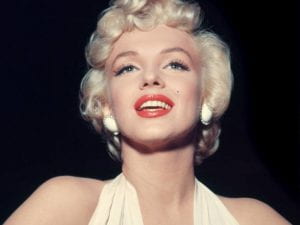Beyoncé, one of the most famous stars in the entertainment industry, has been an icon for females of all shapes, sizes, ethnicities and backgrounds. She is well known for her singing talents and, as of 2016, her filmmaking talents with the production of her project Lemonade. This project aimed to address the struggles of black females and represent these women in a production of what Beyoncé describes as being feminist. Bell Hooks, the author the article “Moving Beyond Pain” would disagree with Beyoncé’s feminist claims of Lemonade, deeming it as a production which supports capitalism and does not positively represent black females. She says that Beyoncé’s definition of feminism is not to be trusted because it does not truly seek to reject patriarchal dominance, but make it acceptable for both women and men to use it against each other. The simplistic overview that this film takes on feminism, according to Hooks, is not simultaneously aimed at minimizing exploitation and violence.
Hooks begins her analysis of the film by assessing it’s relation to capitalism. She proclaims that the main audience of the film is not truly black females, but consumers which encapsulates an audience of all ethnicities. The product was a capitalistic venture, not necessarily meant to empower black females but to use them as bodies to create a money making production. Hooks goes on to point out that many of the black female bodies used to create this production are the focal point of the entire film, placing them at the center and making them the norm (pg. 2). This is not revolutionary, explains Hooks, as she compares this to the ways in which black bodies have been exploited for profit throughout history in industries like the slave trade. The difference pointed out between the slave trade and the commodification of black female bodies like those in Lemonade, is the intent behind the message. Beyoncé’s intent with her film was to “seduce, celebrate and delight,” (pg. 3). Hooks admits that, although the images of the black female bodies have been repositioned to empower, they do not transcend the sexist structure in which black females find their identities. Simply showing images of these bodies does not readily allow black females to be respected and self-actualized.
Another anti-feminist aspect that Hooks points out about the film Lemonade is the way it promotes the ongoing image of the black female as a victim who acts out with rage. In the film, Beyoncé uses a baseball bat to smash car windows at random with no remorse. Her body and her acts of emotional violence are sexualized and celebrated in this scene. This romanticization is not a representation of reality and goes against the purpose of the film which is to show the detrimental effects of emotional violence. Ultimately, the sexual nature and romanticization of this scene uphold the ideal that violence can be used to assert dominance over another.
Beyoncé speaks to her views on feminism in an article published by Elle Magazine titled “EXCLUSIVE: Beyoncé Wants To Change The Conversation.” She explains that feminism, to her, is equal rights for men and women and uses it to shed light on the double standards that exist in society today. The main goal of her feminist pursuits are to help women receive the same opportunities which are so readily given to men over their female counterpart. Beyoncé sees feminism and being feminine as two different things, explaining that anyone can practice feminism and being feminine does not equate to being an anti-feminist; the main characteristic that defines someone as a feminist is the desire for equality between men and women.
In this article, she also shares insight into her athletic-wear clothing line, Ivy Park. Her vision for the brand was to make clothing which promoted the health and love of the female body. She wanted to make clothing which accentuates the female form by lifting the booty and sucking in the waist, making the consumer appreciate her body and feel sexy.
After reading both of these perspectives on Beyoncé and her projection of feminism, I have been able to more deeply understand the factors which contribute to the exploitation of black women. Beyoncé, although she intends to, does not always embody what it means to be a feminist. Her ongoing fight against inequality for black women is notable and definitely aims to bring awareness to the issue, but happens to only be one half of the battle. She still uses the black female body as a spectacle for profiteering and conveys to a wide audience that a feminist is someone who tries to even the score between her and her male counterpart, no matter what that might entail (for example, being violent in response to violence). The way that she describes her feminist approach is that females should be able to do what males do, whether that action is positive or not. The main critique I have regarding Beyoncé after reading the articles provided would be that she has a tic for tac mentality, not eliminating the problem of dominance over the other sex, but further normalizing it.




